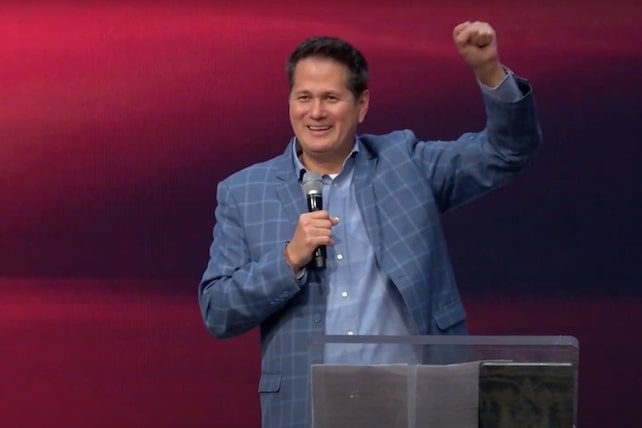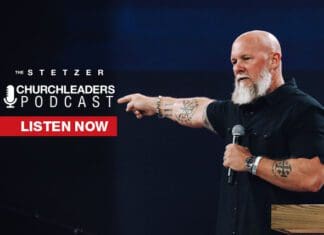It’s been six months since I preached my final message as Pastor of Grace Hills Church, which Angie and I founded together in the summer of 2011. We spent a decade of our lives gathering with people who were passionate about embracing the brokenness of humanity and creating a safe place for people to experience the grace-covered life offered by Jesus. The final twelve months of ministry were tumultuous for our surrounding culture. Pastors everywhere are exhausted. Nationally iy was a time of leadership transition. We reached a point of burnout and entered a long valley of transition. I’ve come to call it a valley because, on an emotional and spiritual level, things got much harder before we began to see the light again.
What has happened within evangelicalism in the last few years has been an unveiling of our flaws and a reckoning with those on the fringe who are trying to find Christ in us. Much has been written about what’s going on within the evangelical movement. If you’re curious, I’d recommend starting with:
(If you’re going to read any of those, be prepared to read without defensiveness – we have serious issues and we need thick skin if we’re going to fix them.)
In the last six months, I’ve ventured into some new areas and back into some old ones. I became a licensed real estate agent and joined the Collier and Associates team. I’m loving that! I’m also renewing my marketing and social media consulting work, which became a passion of mine over a decade ago and led to a book I wrote on the subject called Rewired.
I’ve thoroughly loved the extra family time we’ve had, which we’ve spent taking little trips, camping out, and visiting my daughter at college. Obviously, it’s been a bit of an emotional roller coaster, but I’ve always taught people that every experience you go through – good, bad, or ugly – has the potential to shape you in positive ways and to teach you lessons you wouldn’t have learned otherwise.
7 Lessons Learned in a Time of Leadership Transition
1. Relationships matter more than anything else on earth.
Businesses, institutions, and organizations rise and fall, as do economies and empires. But real friendships last. I recently conducted a wedding and some close friends from our Grace Hills family were present. It was a breath of fresh air!
We bumped into another attendee out shopping and exchanged hugs and tears in the bedding aisle at Home Goods. I spoke for just a couple of minutes on a panel at a fundraiser for For the Love NWA and a couple of tables of Grace Hills friends were there. It felt a little like old times and a sweet feeling washed over my soul.
People matter. Relationships mean something. And while you won’t always be able to salvage every broken relationship, you can never underestimate the value of knowing people as real friends.
2. Grieving takes time and wears a lot of disguises.
A few weeks after stepping away, we began to feel a sense of relief, as if life might resume some kind of normalcy. By the weekend, we were sad again. It took five months for us to feel good about getting up on a Sunday morning to gather with some fellow believers. We kept doing it, but each experience highlighted the pain of our loss.
Now, six months later, we’re on a streak of several weekends in a row of really enjoying ourselves and feeling comfortable in our surroundings.
In that time, my own grief has shown itself in quite a few disguises. I’ve had days of mysterious irritability, moments of unexpected anger, and anxiety and depression along the way. All grief, wearing different costumes.
Grief, showing up as anger.
Grief, dressed up as fear.
Grief, masquerading as depression.
Angie has reminded me on many occasions about how essential it is to allow grief to have its space. We can acknowledge the pain and sit with it, or we can deny it and it will pop up later in unrecognizable forms.
And as I’ve shared in dozens of funerals over the years, grief is a gift that lets us cope with loss in a healthy way and move toward closure and healing.
3. Pivoting is extremely hard but possible.
I began pastoring my first church at age 19 and haven’t stopped since. Twenty-four years of my life were spent moving in a single direction, each step of the journey preparing me for the next.
When you spend your entire adult life dedicating yourself to a particular calling and identity and it comes to a sudden and somewhat unexpected stop, you will walk through a crisis of identity and worth.
Who am I, if I’m not Pastor Brandon?
What am I supposed to do now?
How do I start over, from scratch?
There is light at the end of the tunnel and it seems to grow brighter by the day, but those first few weeks and months were spent hoping for clear direction.
Now, at 44 years of age, I’m re-enrolled in college to finish a degree in Communications at the University of Arkansas, which will come in quite handy in building a boutique online marketing agency and selling real estate. I’m getting to exercise my entrepreneurial muscles and it’s stretching me in uncomfortable ways.
But I’m starting to fit into my skin again.
Pivoting, especially in mid-life, is hard. But it’s possible.
4. You are not your job.
Who are you?
If you’re like most people, myself included, you start your answer with whatever it is that you do with the majority of your waking hours, whether it’s a career in the marketplace or being at home full-time. And that’s okay, but it’s not everything.
You are more than your career. Your worth isn’t to be found in your professional accomplishments.
Your worth is rooted in your humanity. You’re a living soul with a unique personality created in the very image of God and infinitely precious to him, regardless of who writes you a paycheck.
I’ve had to realize that I’m valuable to the people around me because of who I am deep within, not because I was a pastor, speaker, or organizational leader.
5. It’s okay to turn the page.
There is a place deep within the soul of every person, an inner temple, if you will, where we meet and commune with the Spirit of God and understand him and ourselves in a way no one else can.
But people will try. My former Pastor, Rick Warren, often said tongue-in-cheek that “God loves you and everyone else has a wonderful plan for your life.”
Most people who make career changes are celebrated, but within evangelical culture, we use vocabulary that stings. We describe women and men who leave their positions as “walking away from ministry” or being “unfaithful to their calling”.
We even make assumptions that something bad must have happened. We’re accustomed to scandal. In fact, we are entertained and intrigued by it.
I’ve been surprised at the number of pastors – probably dozens – who have messaged me privately to say they would leave if they feel they could support themselves, but they carry guilt about even thinking such thoughts. So let me encourage you who have been exhausted and depleted by the work of managing conflict and unhealthy cultures to love yourself enough to do the healthiest thing you can for yourself and for your family.
If God wants you to continue in pastoral ministry, he’ll make a way and he’ll make it clear. But if you feel the liberty or the leading to make a change and you have peace about this new direction, walk confidently into it and thank God for guiding you.
It really is okay to turn the page, to celebrate the work you’ve done, and to anticipate whatever may be in your next chapter.
6. The future isn’t as scary as you think it is.
Our survival instinct and our innate need for security cause us to fear the unknown. And nothing holds us back from greatness like giving our fear more power than it deserves.
One of the hardest aspects of transition is stepping into the unknown without full knowledge of what is coming. And that’s where faith comes in.
Some days, I’ve felt slightly foolish about the number of times I’ve preached to others about believing the very best about God and about their futures only to find myself in similar circumstances struggling to lift my foot toward the next step in the darkness.
God is faithful. His presence never fails us.
That doesn’t mean you won’t suffer or experience loss and defeat. You’re human, and this is earth, so you’re going to encounter challenges.
But in God’s economy, trials and hardships can become learning opportunities and the future can be brighter than our past even when we’re bracing ourselves for pain.
Keep going.
7. Jesus is worthy.
There are two particular miracles I cannot quite explain or rationalize. First, the Incarnation – that God became a man. It makes no sense to me how this could be.
The second is the resurrection. Defying all logic and rationality, Jesus Christ came back from the dead. How? I don’t know other than to credit the divine initiative and working of the Almighty.
What I do know is that the life, death, and resurrection of Jesus Christ changed everything, for all of us, for all eternity.
Therefore, whatever Jesus has to teach us about walking in the way of love, I want to learn it. Whatever he showed us about loving God and neighbor, I want to grow in it.
Jesus Christ, the same yesterday, today, and forever, is worthy of praise and gratitude. And he’s worthy of imitation.
I still have a long way to go and much to learn. I haven’t arrived. But I want to use the rest of my life to figure out how to be like Jesus.
Whatever leadership transition you may face, know that God is presently, actively, and personally working in, around, and through you. He is always worthy. You are always valuable. And life is meant to be lived, not merely survived.
This article about lessons learned in a time of leadership transition originally appeared here, and is used by permission.































